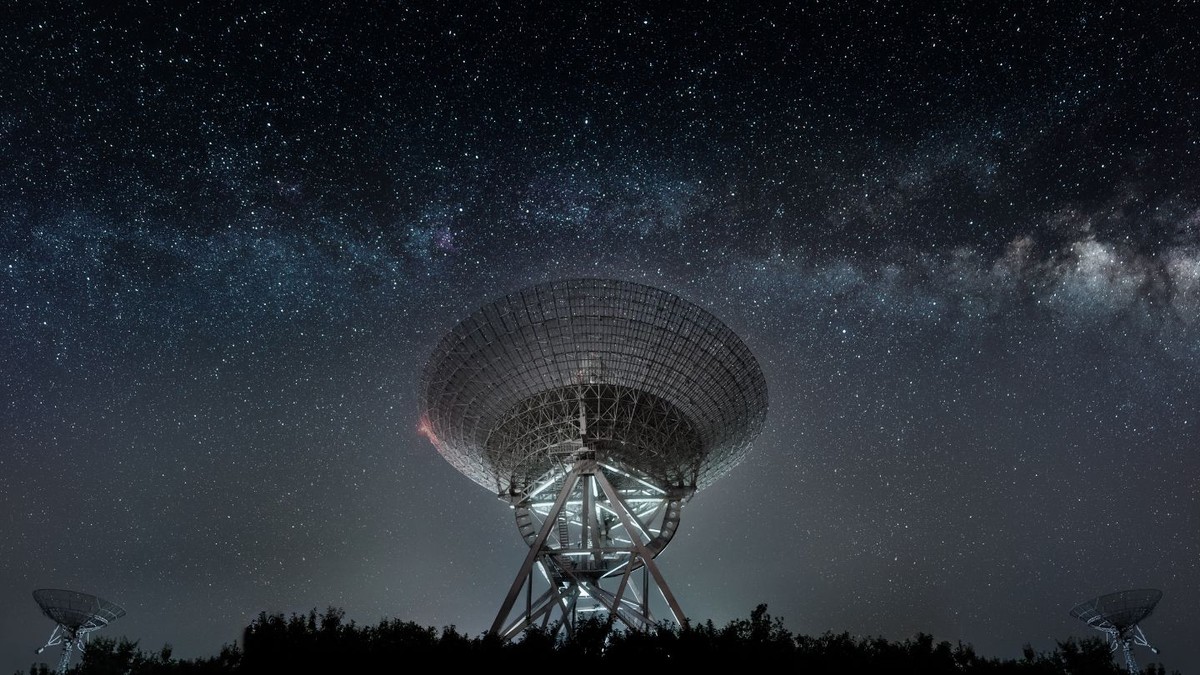[ad_1]

ABSTRACT breaks down mind-bending scientific research, future tech, new discoveries, and major breakthroughs.
Searching the skies for UFOs or homesick aliens is practically an American pastime, and no one does it better than the SETI Institute (SETI meaning Search for Extraterrestrial Intelligence).
Established in 1984, SETI has made it their mission to scan the skies for radio signals comprised of non-Earth based “technosignatures” that may belong to alien tech. Such signals—which may indicate communications technology in use, and thus intelligence—are sought after by scientists looking for signs of alien life. So far, this decades-long search has yet to turn up any convincing leads, but a new paper published Monday in the journal Nature Astronomy is hoping to change that by using machine learning to tackle the problem.
Using telescope data that was first collected in 2016, the machine-learning algorithm analyzedver 480 hours of data from 820 stars and identified eight signals of interest that previous algorithms had not detected.
Peter Ma is first author on the paper and an undergraduate student at the University of Toronto. He told Motherboard in an email that while AI has been applied to SETI’s radio data in the past, this new approach takes the search completely out of human hands.
“Previously people have inserted ML [machine learning] components into various pipelines to help with the search,” Ma said. “This work relies entirely on just the neural network without any traditional algorithms supporting it and produced results that traditional algorithms did not pick up.”
Radio data streaming in from outer space is an abundant resource, but it’s also one that can be easily muddled with our own Earth-based radio signals. Ma said that signals of interest that are plucked from this haze are ones that “are narrow band, doppler drifting signals originating from some extraterrestrial source.”
In other words, radio signals that are moving and fall into a particular range of frequencies. However, how these signals may morph over time or distance is still an open question.
Looking for these signals in the data can be like looking for a needle in a haystack—time consuming and tedious—but that’s where machine-learning can help. Ma and colleagues designed their neural network to identify and then classify what it “thinks” the most important features of the SETI data while simultaneously trying to filter out Earth-based interference.
In addition to being twice as fast as traditional algorithms, Ma said that using a neural network to study this data also allows for a type of out-of-the-box thinking that human-dictated algorithms struggle to achieve.
“Traditional algorithms operate on a given set of instructions designed by us… thus the algorithm will only ever discover what we tell it to find,” he said. “The issue is that the nature of an ET signal is not completely known… Hence our proposed approach is to just learn it.”
Ma and colleagues’ neural network was able to find eight unique signals hidden in the data that may potentially be from extraterrestrial sources, but research hasn’t yet been done to confirm these. And while further analysis may be able to confirm these sources as non-Earth based, that doesn’t mean scientists will know exactly what kind of tech they’re connected to, Ma said.
In the best case scenario, these signals may include embedded information about the engineering of the technology or even a collection of technosignatures from an alien civilization.
“We don’t count on this, though,” Ma said.
[ad_2]
Source link
